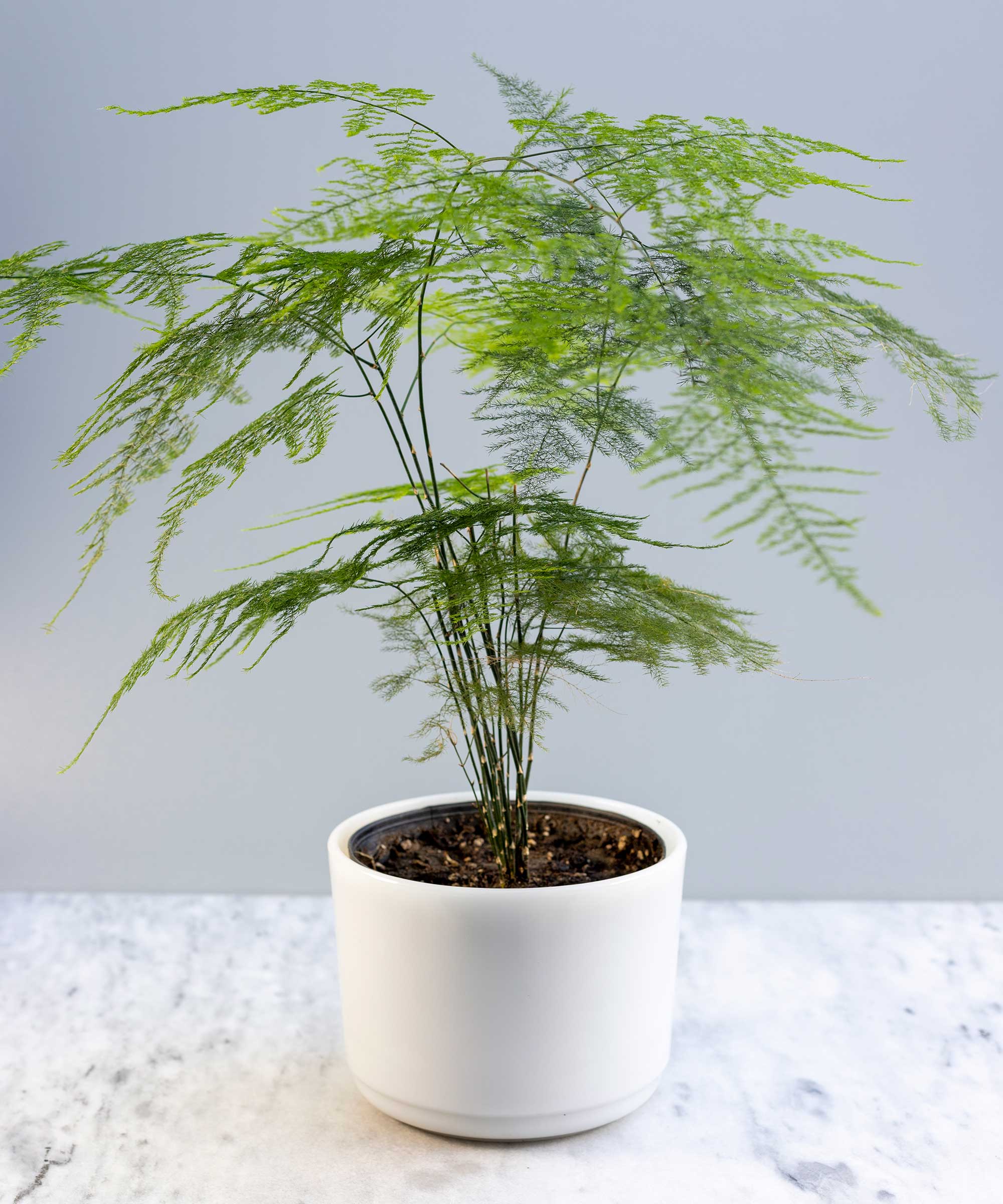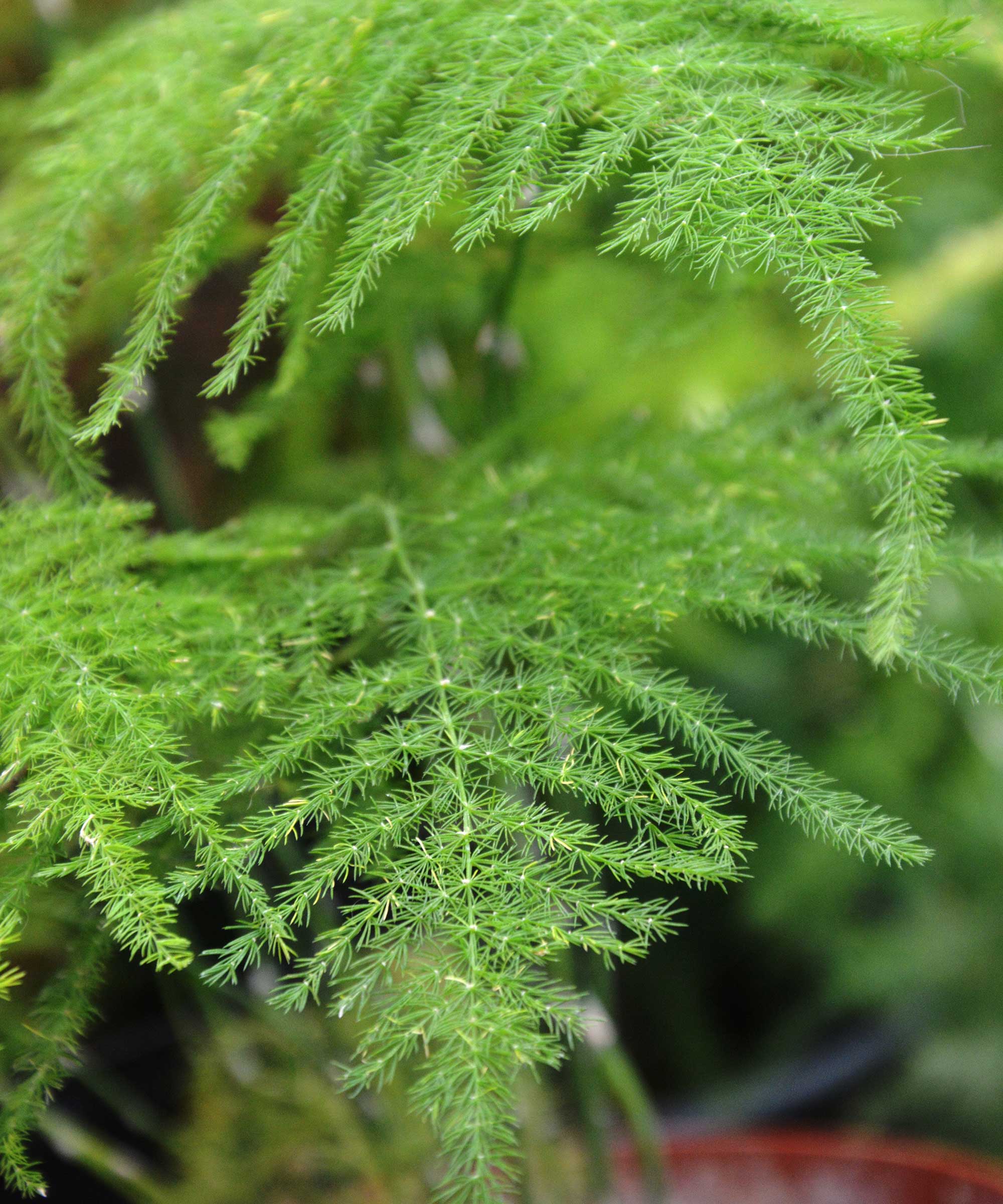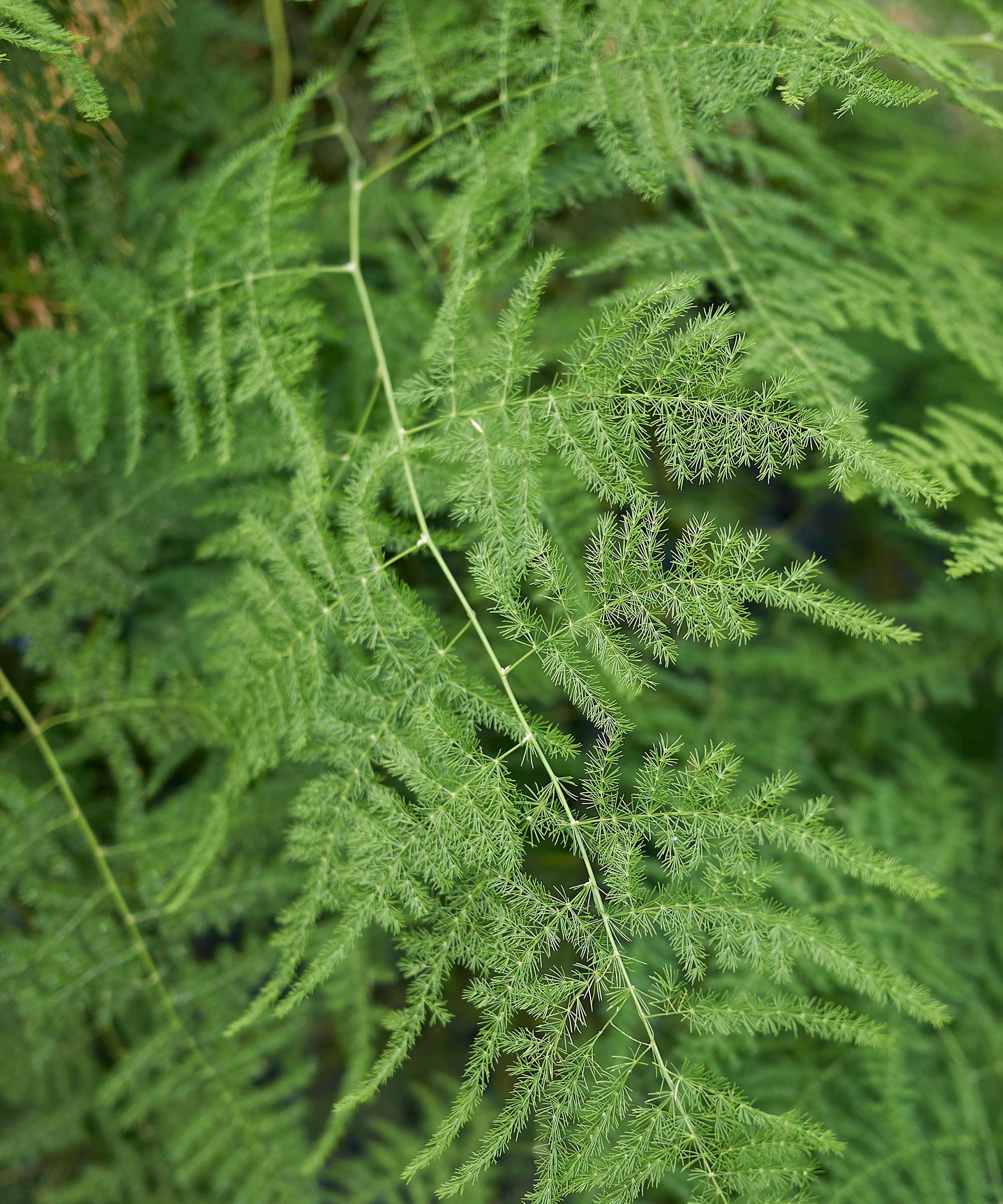Why is my asparagus fern turning yellow? Solve this common problem with these pro tips
The experts reveal how to prevent discoloration, plus what to do if this has already happened to your houseplant


Q: I have had an asparagus fern in my living room for eight months or so. Its foliage and some of the stems have recently turned yellow. What could be the problem?
A: Asparagus ferns (Asparagus setaceus) are very attractive indoor plants prized for their feathery foliage. However, their delicate leaves, as well as the stems, are susceptible to discoloration if the growing conditions aren't quite right.
I have my own asparagus fern and can confirm that they are not the easiest of houseplants. I've had to move it a number of times – to different places in different rooms – to finally find a spot that suits it. And, as well as getting the right placement for your plant, you'll also need to check on your watering routine.

Asparagus ferns have delicate foliage
3 potential causes for a yellowing asparagus fern
Keep your houseplants in top health by bearing these potential problems in mind.

The feathery leaves can turn yellow if the plants are stressed
1. The wrong location
You may already know that if an indoor succulent (such as an aloe) gets too much sunlight, it can turn orange or reddish. In fact, most houseplants don't like sitting directly in the sun's glare, even if it is through a glass window. The harsh conditions can cause them to overheat, scorch the leaves, and reduce humidity levels (which most tropical plants need to thrive). Asparagus ferns are no exception.
My asparagus fern sat on a sunny windowsill in the bathroom for a while. While the humidity would have been great for it, the searing light wasn't, and the leaves started turning crispy and yellow before dropping off. Its current position is bright enough, but there is no direct light shining on it throughout the day. It seems to be much happier.
In other words, bright but indirect light is best – 'akin to the dappled sunlight filtering through a forest canopy,' as points out Aaditya Bhatta of Plants Craze.
Design expertise in your inbox – from inspiring decorating ideas and beautiful celebrity homes to practical gardening advice and shopping round-ups.
'A north or east window provides good light conditions for your fern,' adds houseplant expert Vladan Nikolic.

Aaditya Bhatta is the founder and editor of Plants Craze, a website that offers tips and tricks on gardening and plant care. He has been a plant enthusiast and plant parent for over a decade.

Vladan Nikolic, otherwise known as Mr. Houseplant, is a houseplant expert with over 10 years of experience. He is the founder of the houseplant care blog MrHouseplant.com and also an influencer who helps newcomers in the houseplant world become great plant parents. You can find him on Instagram, TikTok, Youtube, Facebook, Twitter and Pinterest.

These houseplants can scorch in bright sunshine
2. Watering problems
Watering indoor plants isn't as simple as you may first think. Get it wrong, and plants can either dry out beyond repair or suffer from root rot.
Asparagus ferns' leaves will turn yellow if the soil stays dry for too long, Vladan says. 'On the other hand, soggy soil and poor drainage can lead to the same issue.'
He advises watering your fern when the top two inches of the soil feel dry. Make sure that the pot has drainage holes so that excess water can escape, and use a well-draining potting mix, adds Aaditya.
Note that less watering will be required during the winter months.
If you think the soil is over-saturated, and your plant is suffering as a result, repotting it into a fresh, dry mix may be in order. You can cut away damaged roots as you do this.
Humidity is also important for these plants. Frequent misting can help (I love this dotted glass mister from Terrain), as can putting the container on a small dish filled with wet gravel or pebbles. Naturally humid rooms, such as bathrooms and kitchens, can be perfect – if the lighting and temperature are right.
Alternatively, you could invest in a humidifier, which Vladan says is the most efficient method.

Keep the air around your asparagus fern humid
3. Extreme temperatures
I've covered the dangers of too much sun, but don't forget about the effects of central heating on houseplants, too. Putting your asparagus fern next to a radiator is a no-go, and drafty windowsills and doors should also be avoided as the cold can shock them.
A minimum of 55°F is required for these plants. Average room temperatures (around 65-75°F) will help them to thrive.

Heat and cold can harm these plants
FAQs
How can you fix a yellowing asparagus fern?
'Once you find out what’s causing the leaves of your fern to turn yellow, you can address the issue and prevent further damage,' says houseplant expert Vladan Nikolic. 'The yellow needles will not rejuvenate once you make the necessary adjustments in the care routine. However, when you give your fern the optimal growing conditions, new growth will appear at the soil line.'
Yellow stems and leaves can be removed from your plant using a clean pair of pruners. But, I'd advise wearing gardening gloves, and being careful not to touch your eyes while you do so, as the plants are mildly toxic and can cause irritation. Also, try to avoid touching the healthy leaves as you prune as this can promote further discoloration.
Do you need to repot asparagus ferns?
Aaditya Bhatta, the founder of Plants Craze, recommends repotting asparagus ferns every two to three years.
Repotting provides a good opportunity to propagate your asparagus fern via division – simply break the plant up into rooted sections and plant them separately.
What about Asparagus densiflorus? Do they require the same care?
Asparagus densiflorus is another type of plant that is also referred to as asparagus fern (or foxtail fern). They are very similar plants to A. setaceus, both in terms of care requirements and looks.
It's worth persevering with asparagus ferns for their beautiful fronds. However, there are some other, low-maintenance houseplants available that are easier to care for. Pothos are my personal favorite for their fast growth rate and almost indestructible nature.

Holly started writing about gardening five years ago, and she is a regular contributor to Homes & Gardens. She has also written many gardening features for Woman & Home and Real Homes, too. She has previous experience as a professional gardener, where she helped to plant and maintain private gardens. Holly has also looked after allotment plots over the years and loves to grow her own flowers and veggies from seed. In her spare time, she enjoys visiting local gardens, botanical drawing, and tending to her ever-growing collection of houseplants.